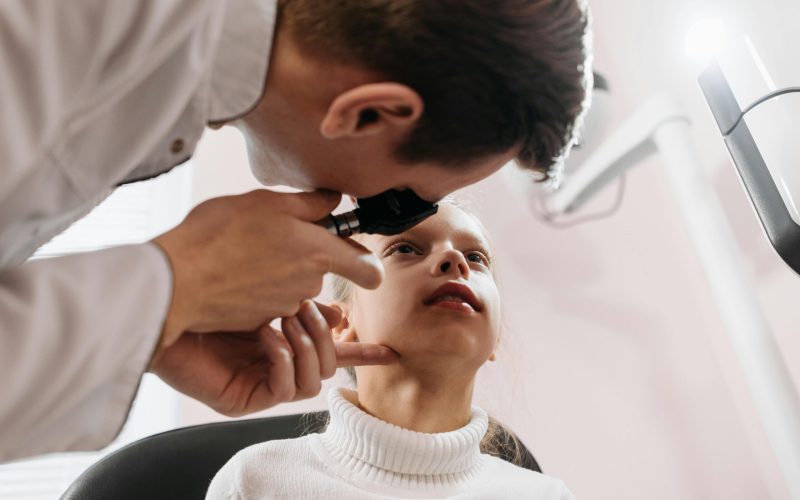A common joke among law students, especially for those like me with an undergrad degree in political science, is that we attended law school to avoid math and other topics like it. We certainly did not attend law school expecting to research medical conditions. But in my time working on cases involving allegations of child abuse, I have learned that medical research can prove vital. Doctors frequently assume injuries and symptoms are the product of child abuse, which they call “Suspected Non-Accidental Trauma” (SNAT). This leads them to report their suspicions to the Department of Child Safety (DCS), which then also arrives at the “SNAT” conclusion. Often, however, the injuries or symptoms are the product of some alternative, innocent explanation, ranging from accidental falls to niche medical conditions that require diagnoses from a specialist. Accordingly, I have spent part of my clerkship researching facts that should seemingly be learned in medical school, not law school, but are invaluable in properly litigating a child abuse case. Below is just a taste of the types of issues I research.
Alternative Explanations and Causes of Purported Sexual Abuse
When doctors discover bruising or irritation in the genital region or find that a child is exhibiting hypersexualized behaviors, they tend to assume that sexual abuse is occurring. But such a conclusion may be too hasty. For example, genital bruising on a female child could be caused (as it commonly is) by a straddle injury. Alternatively, similar physical symptoms might be caused by dermatitis, vasculitis, neoplasia, anatomic variants, inflammatory bowel disease, or various infections. Any number of these, which may not have been diagnosed yet, could be the real cause of symptoms that a doctor viewed as evidence of sexual abuse. Even a child exhibiting hypersexuality, which intuitively seems like a clear sign of sexual abuse, may readily be explained by alternative medical conditions. For example, Klüver-Bucy syndrome, seemingly caused by abnormalities in the temporal lobe, is characterized by hypersexualized behaviors.
Alternative Explanations and Causes of Purported Physical Abuse to the Head
Many doctors believe that subdural hemorrhages (bleeding in the space between the skull and the brain) are strong indicators of physical abuse. In reality, they can be caused by several other conditions without any physical trauma to the head region. For instance, subdural hemorrhages are somewhat common for people with blood disorders, such as hemophilia, von Willebrand disease, factor XIII deficiency, glutaric aciduria type 1, and Menkes syndrome. A brain bleed could also be the product of a traumatic birth or a negligent doctor.
Alternative Explanations and Causes of Purported Physical Abuse to the Skin
When a child presents with more bruises than typically accounted for by general clumsiness, or when the bruises are at various stages of healing, doctors tend to assume that the child is experiencing physical abuse. In reality, it is possible that the child is simply a klutz—whether due to pure incoordination or a developmental condition—who falls more frequently than other kids. Bruising is also exacerbated by blood disorders, such as hemophilia. Many other disorders, including fibrinogen, vitamin K deficiency, thrombocytopenia, leukemia, aplastic anemia, disorders of platelet function, disseminated intravascular coagulation, and liver disease, can also cause bruising. Researchers recently found yet another disorder that is accompanied by abnormally high rates of bruising, proving that the real cause of some injuries resembling physical abuse may not even be known to doctors yet.
Alternative Explanations and Causes of Purported Physical Abuse Resulting in Fractures
Doctors estimate that up to a quarter of bone fractures in young children are attributable to physical abuse. Consequently, doctors treating a child with a broken bone might immediately assume the child is being abused, especially if long bone scans show that the broken bones are at different stages of healing. Certain diseases, however, like osteogenesis imperfecta, osteoporosis, rickets, and Hyper-IgE syndrome, weaken bones and lead to frequent and unexplained fractures in infants and young children. Furthermore, bone fractures from childbirth may go unnoticed for months and later be mistaken for abuse. Mistaken abuse is especially prevalent with premature babies, as they tend to have poor bone development, which frequently results in rib and long bone fractures. Other conditions, like Caffey disease, cause severe—but temporary—swelling, which doctors may mistakenly assume is the product of abuse.
Representing Clients Against Child Abuse Allegations
When a child presents with injuries or behaviors potentially attributed to abuse, doctors and DCS investigators may exercise caution by assuming that abuse occurred. After all, their goal is to protect the child. But this assumption has significant consequences for parents wrongfully accused of abusing their child and may delay proper treatment for a child’s underlying medical condition. As discussed above, several alternative explanations exist for a child’s injuries. Discovering the true underlying cause is paramount. As a law clerk, I presumed my main challenge would involve case research and legal writing, but instances like these make it clear that the practice of law encompasses far more. Sometimes, properly representing clients requires learning about medical conditions for body parts I did not even know existed.
* Much of the medical research for this article is adapted from “Medical Mimics of Child Abuse” by Cindy W. Christian and Lisa J. States, which can be found at https://doi.org/10.2214/AJR.16.17450
Sam Fraser is a 2l at Sandra Day O’Connor College of Law. As a law clerk at Woodnick Law PLLC, Sam has the opportunity to assist with real cases and to research areas of interest relating to his future practice of law.



